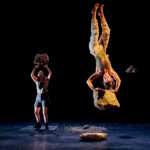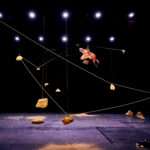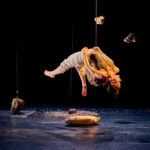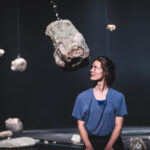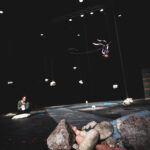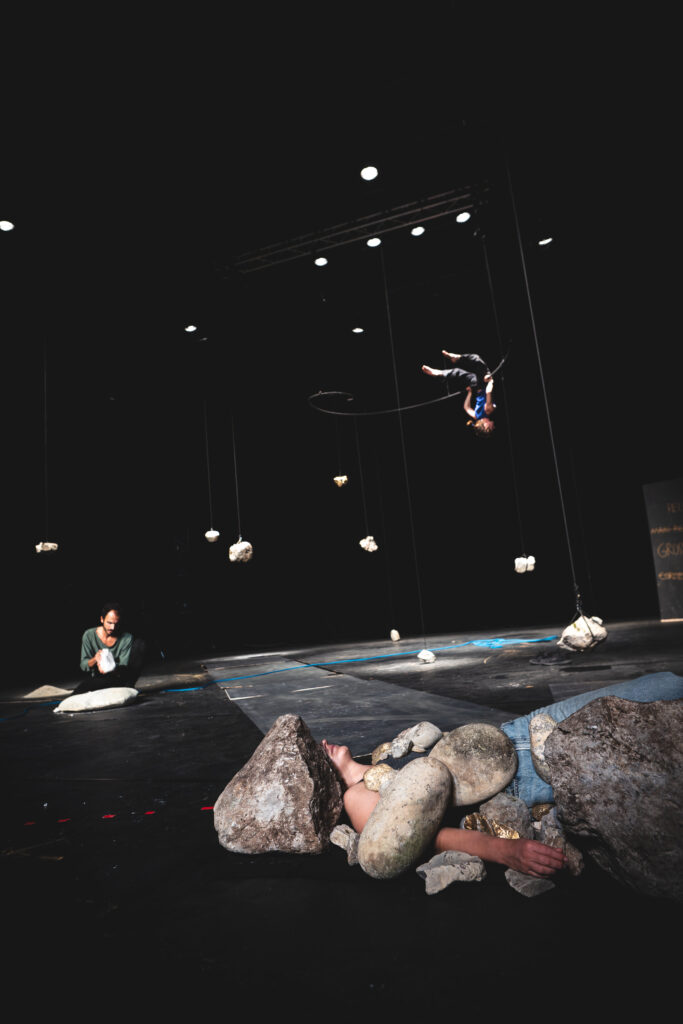
Maison Courbe
Le bruit des pierres
Nina Harper · Domitille Martin · Ricardo Cabral
THE PROJECT / What can we learn from stones? In this hybrid creation, they are transformed into suspended props and real stage partners. While questioning the relationship between Western humans and their environment, the performers evolve and create a choreography of suspension, imbalance, and collapse.
BIO / 3 authors are behind this creation as part of the Maison Courbe collective:
Nina Harper is a Brazilian dancer, circus performer and director based in France since 2013. She graduated with a double degree in circus arts from Académie Fratellini and performing arts from the University of Paris 8. She collaborates and works as a performer with artists from dance, theater, circus and visual arts, such as Cie Libertivore, Cie du Chaos, Laurent Goldring, among others. Co-founder of the collective Maison Courbe, Nina develops an approach to suspension that blends dance, somatic practices and energetic arts.
Domitille Martin is a French visual artist and sculptor who works with a variety of materials and creates artistic installations in galleries, theaters and unconventional spaces. She graduated from École Nationale Supérieure des Arts Décoratifs in Paris and completed an exchange program at the Parque Lage Visual Arts School, in Rio de Janeiro. In 2021, she was a resident artist at Cité Internationale des Arts in Paris. She collaborated with circus artist Inbal Ben Haim on the contemporary circus performance PLI, an intersection of visual and performing arts.
Ricardo Cabral is a Brazilian artist-researcher in performing arts. He is a PhD candidate and holds a master’s degree in Performing Arts from the Universidade Federal do Rio de Janeiro. In his research, he experiments through creations that open spaces for discussion and is interested in the idea of proliferation of life amidst the ongoing sixth mass extinction of species. He is the artistic director and co-founder of Teatro Caminho (Rio de Janeiro), where he writes, performs, direct and produces plays, films and performances.



